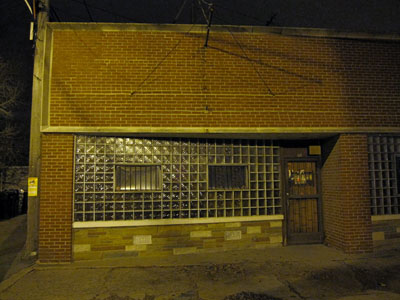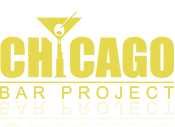This memoriam is dedicated to Rick Kogan, whose contributions not only made this memoriam possible, but who has informed and entertainment us for years on Chicago and its nightlife
When Murray Burnett wrote Everybody Goes to Rick’s, later filmed as Casablanca, he could have meant Riccardo’s in Chicago. This other “Rick’s” was opened by an Italian bon vivant following Prohibition in 1934 in a former speakeasy. Originally catering to neighborhood people, Rick’s also served in part as a gallery for local sculptors, photographers and painters, of which Riccardo himself was one. Rick’s Piedmont cuisine and, more importantly, its ever-popular bar was a magnet for local newsmen, leading to its reputation as the “Montmartre of the Midwest.” After four ownership changes, Rick’s (not to be confused with Riccardo’s Trattoria today) finally closed in 1995, much to the dismay of the city’s movers and shakers from the past 60 years.
“Born Richard Novaretti in Italy, he was a ship’s mate (and painter, dancer and musician) who abandoned the sea in New Orleans in order to marry a new acquaintance named Mimi. After a short stint as dancers at a Georgia nightclub, he and Mimi arrived in Chicago and he began to try to sell his paintings. He tried his hand at magazine publishing and at a number of ‘straight’ jobs before opening a restaurant/speakeasy on South Oakley Avenue… In his first sliver of space, he allowed artist friends to hang their work (for sale) on his restaurant’s walls, creating an environment that pleased both painters and patrons. He painted three large female nudes and mounted two of them on the ceiling.”
– excerpt from Rick Kogan’s Chicago Tribune article, “Last Call at Ric’s; A Final Toast to the Watering Hole Ric Riccardo Left Chicago” (September 15, 1995)
According to Rick Kogan, Riccardo later expanded into the next building (also a former speakeasy) and then into the southernmost building in 1947 (the third former speakeasy), and he put seven murals on display, representing the Lively Arts: Ivan Albright’s Drama, Aaron Bohrad’s Architecture, Rudolph Weisenborn’s Literature, Vincent D’Agostino’s Painting, William Schwartz’s Music, Malvin “Zsissly” Albright’s Sculpture, and Riccardo’s own Dance.
“The downstairs was Kelly’s Stable and the upstairs was a speakeasy, in what was then a working class neighborhood behind the Wrigley Building. Frame buildings and houses sat next to each other on the street that ran down to the river… The room that is now the northernmost was the original dining room, and where the kitchen now is the bar stood. In the original dining room you can see the murals that Riccardo painted there himself. The walls in the center room, built in 1939, also have examples of Riccardo’s art.”
– Dennis McCarthy, The Great Chicago Bar & Saloon Guide (1978)
Riccardo later married a woman named Jill after she stopped by in 1940 and was told to “sit on the floor” by her unlikely but soon-to-be-husband, whom she married in the company of all 64 Riccardo’s employees. According to Kogan,
Jill Riccardo Allen recalls: “…games played on the bocce court that was once in the basement; of lion steaks served for selected friends upon Ric’s return from a safari; of a private room just off the main entrance called The Padded Cell; and of Ric’s three great Danes who wandered freely about the restaurant throughout the 1940s.”
“Mr. Richard (Rick) Riccardo hasn’t changed the decor an iota since his father’s day, so the restaurant still has its pleaantly timeless atmosphere–strolling guitarist, accordianist and singing waiters–and the bar still swings under its famous Seven Lively Arts murals…”
– Jory Graham, Chicago, an Extraordinary Guide (1967)
Kogan recounts that after Ric Sr.’s death at 51 in 1954, the restaurant was run by his son (by Mimi), the Ric Jr., who lacked the passion for the place shown by his father. As his troubles mounted, stemming from living fast and supporting three ex-wives, the murals at Rick’s began to vanish: Albright’s Drama mysteriously in 1973 and the next year Bohrad’s Architecture was sold to a gallery. They were replaced by photographic reproductions and Ric Jr. himself vanished, later found to have choked to death in 1977 at a restaurant in a Buckeye, Arizona.
The Angelos brothers bought Ric’s in 1974 and, in its most recent heydey over the next 20 years, Rick’s remained a popular hangout for “Mad Men” advertising types andPR professionals. Riccardo’s also attracted newsmen from nearby Chicago Tribune, Chicago Sun-Times and the now-defunct, Daily News, including the likes of Studs Terkel and Mike Royko, though the place was in steady competition with the bygone Boul Mich, Corona Cafe, Wrigley Building Restaurant, Radio Grill, as well as current legends Andy’s Jazz Club and Billy Goat Tavern. The huge leather covered, palette-shaped bar matched the palette-shaped windows and was a hive of local politics and media gossip after work from 5-9pm nightly, especially on Fridays, when the air was thick with smoke from cigars and cigarettes. Riccardo’s was open until 1am on weeknights and 3am on Saturdays. Photos of notable Riccardo’s regulars lined the walls and a streetside café operated in summer months. The menu consisted of Piedmont cuisine from the Torino region of Italy, which is predominantly Italian but with some French influence, and included dishes such as Saltimbocca, Trippa alla Livornesee, Lobster Fra Diavolo, Spaghetti Carbonara, and Cannelloni. Food was served in a couple of dining rooms with its dim booths on the first floor and upstairs. All of the above led to the joint being nicknamed the “Montmartre of the Midwest” after the Parisian nightlife district best known for the Moulin Rouge.
“It surprised few regulars in 1989 when the sale of the building was announced. That deal fell through. Another transformation–a group leased the place in 1992 and created a short-lived upscale dining spot with private club upstairs–drove many of the old regulars away for good and replaced what were left of the “Lively Arts” murals with a large, strangely dark mural featuring a nude man, and others who resembled Nelson Algren, Royko and Terkel. The Angelos brothers came back in 1993 but there was no salvation.”
– excerpt from Rick Kogan’s Chicago Tribune article, “Last Call at Ric’s; A Final Toast to the Watering Hole Ric Riccardo Left Chicago” (September 15, 1995)
Though a far cry from the original, Riccardo’s is now the steakhouse and reliable standby for Sugar Daddies known as Phil Stefani’s 437 Rush. Fortunately, the Billy Goat Tavern continues to operate as the go-to joint for the ever-dwindling number of journalists and typesetters, while local artists have migrated to the West Side. Whatever their stripe, Riccardo’s has left a void in the hearts of those that knew it and those like me who wish they stopped by for a double Scotch before the place met the big Saltimbocca in the sky. Chin-chin, Riccardo! (And to Rick Kogan.)

